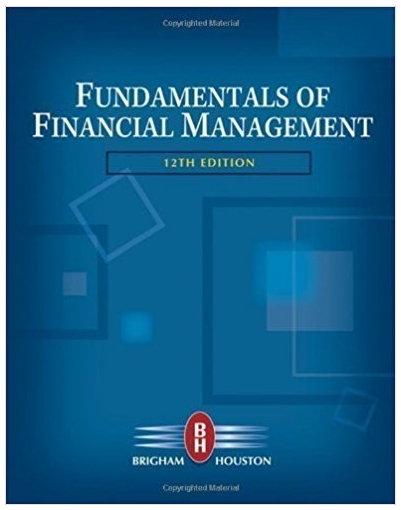Assume that you have just been hired as a financial analyst by Tropical Sweets Inc., a mid-sized
Question:
To begin, you gather some outside materials on derivatives and corporate risk management and use those materials to draft a list of pertinent questions that need to be answered. In fact, one possible approach to the paper is to use a question-and-answer format. Now that the questions have been drafted, you must develop the answers.
a. Why might stockholders be indifferent to whether a firm reduces the volatility of its cash flows?
b. What are seven reasons risk management might increase the value of a corporation?
c. What is an option? What is the single most important characteristic of an option?
d. Options have a unique set of terminology. Define the following terms: (1) call option; (2) put option; (3) exercise price; (4) striking, or strike, price; (5) option price; (6) expiration date; (7) exercise value; (8) covered option; (9) naked option; (10) in-the-money call; (11) out-of-the-money call; and (12) LEAPS.
e. Consider Tropical Sweets’ call option with a $25 strike price. The following table contains historical values for this option at different stock prices:
Stock PriceCall Option Price
$25……………………….$ 3.00
30…………………………...7.50
35………………………….12.00
40………………………….16.50
45………………………….21.00
50………………………….25.50
(1) Create a table that shows the (a) stock price, (b) strike price, (c) exercise value, (d) option price, and (e) premium of option price over exercise value.
(2) What happens to the premium of option price over exercise value as the stock price rises? Why?
f. In 1973, Fischer Black and Myron Scholes developed the Black-Scholes Option Pricing Model (OPM).
(1) What assumptions underlie the OPM?
(2) Write the three equations that constitute the model.
(3) What is the value of the following call option according to the OPM?
Stock price = $27.00.
Exercise price = $25.00.
Time to expiration = 6 months.
Risk-free rate = 6.0%.
Stock return variance = 0.11.
g. Disregard the information in Part F. Determine the value of a firm’s call option by creating a riskless hedge given the following information. A firm’s current stock price is $15 per share. Options exist that permit the holder to buy one share of the firm’s stock at an exercise price of $15. These options expire in 6 months, at which time the firm’s stock will be selling at one of two prices, $10 or $20. The risk-free rate is 6%. What is the value of the firm’s call option?
h. What effect does each of the following call option parameters have on the value of a call option? (1) Current stock price; (2) Exercise price; (3) Option’s term to maturity; (4) Risk-free rate; (5) Variability of the stock price.
i. What are the differences between forward and futures contracts?
j. Explain briefly how swaps work.
k. Explain briefly how a firm can use futures and swaps to hedge risk.
l. What is corporate risk management? Why is it important to all firms?
Fantastic news! We've Found the answer you've been seeking!
Step by Step Answer:
Related Book For 

Fundamentals of Financial Management
ISBN: 978-0324597707
12th edition
Authors: Eugene F. Brigham, Joel F. Houston
Question Posted:





